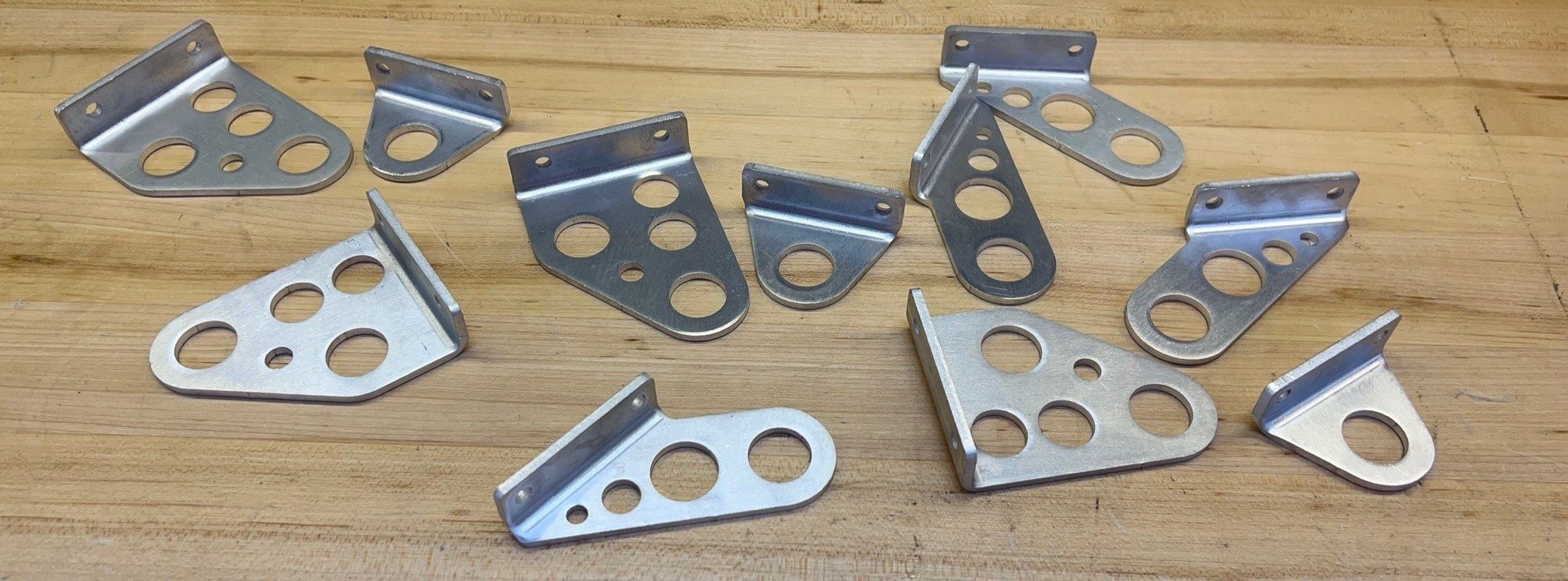I’ve used SendCutSend to laser cut many aluminum, 4130 and titanium parts, but I had never used their bending services. Last week I needed to fabricate a bunch of brackets with precise bends, so I decided to give their service a whirl. I was specifically curious how close the actual parts would be to the 3D-printed prototypes.
The bent brackets (green) will support the heatshield (mauve) and attach to the transaxle via the vibration/heat isolators (purple). The rear bracket will also provide support for the X-pipe. There will be at least 6 and potentially as many as 8 different brackets.
I didn’t use SendCutSend’s online bend calculator because I had already designed the brackets using Solidwork’s sheet metal features which automatically takes into account bend allowances. I highly recommend that you use a CAD-based sheet metal tool to design these types of parts because; (1) it makes things infinitely easier to design the part, (2) you can 3D print prototypes and (3) you can create assemblies like the one pictured above to tweak and validate the design.
SendCutSend’s bending guidelines are helpful and easy to understand. The only thing that I needed to change in Solidworks was to set the K Factor and Bend Radius values to what was spec’d on SendCutSend’s website for the material being bent. This changed the bend profile a bit, so I reprinted the prototype brackets. I then exported the flat patterns to DXF files ensuring that the bend lines were included, uploaded the files to SendCutSend and indicated if the bend lines should be oriented up or down. Wow, that was easy.
SendCutSend laser cut and bent these parts from 1/8” 5052 aluminum. While these brackets only have a simple 90-degree bend, SendCutSend supports significantly more complex bends.
Left/right mirrored versions of the same bracket to compare the 3-D printed prototype to the final bent aluminum part. The match is pretty much perfect as far as I can tell.
In low volume, each bend costs $2 with a $9 bend minimum. For example, one bend will cost you $9, but 5 bends will only cost $10 (I think I got that right, but their quoting is transparent and instantly updates). The good news, is that the minimum applies to the whole order and not a specific part. This is an excellent deal if you think about it. In my neck of the woods a fabricator costs $120/hour which equates to $2/minute. It would take an expert with a non-CNC brake longer than that to mark the part, align it and bend it. I could have easily bent these parts in my brake for free, but it would have been impossible to be as precise. In addition, while my brake has fingers, they all have the same profile which is fairly pointed. SendCutSend has specific dies for every thickness of material that they bend which, as proven above, means that I can almost perfectly model bent parts (as least simple ones).
The only downside is that bending will add a couple of days to the typical one-week delivery time.
I have some more complicated parts that require bending and it looks like SendCutSend will handle any of the parts that I will draw in CAD.


